Reanna Merasty
Advisor: Shawn Bailey
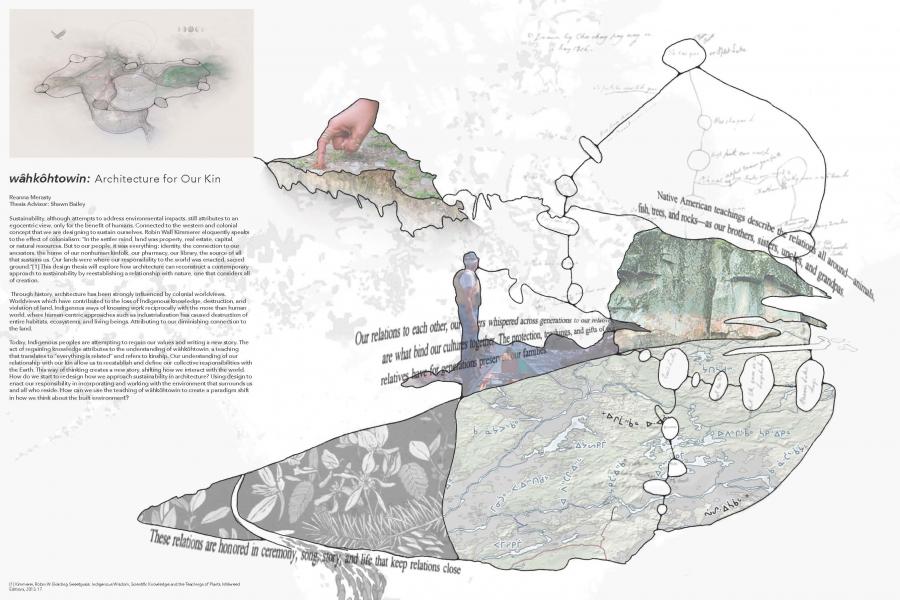
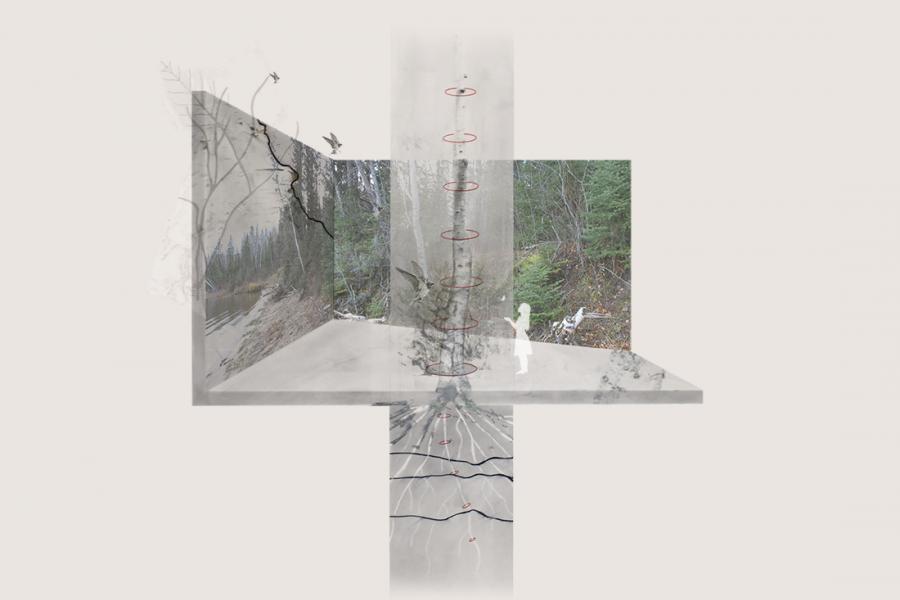
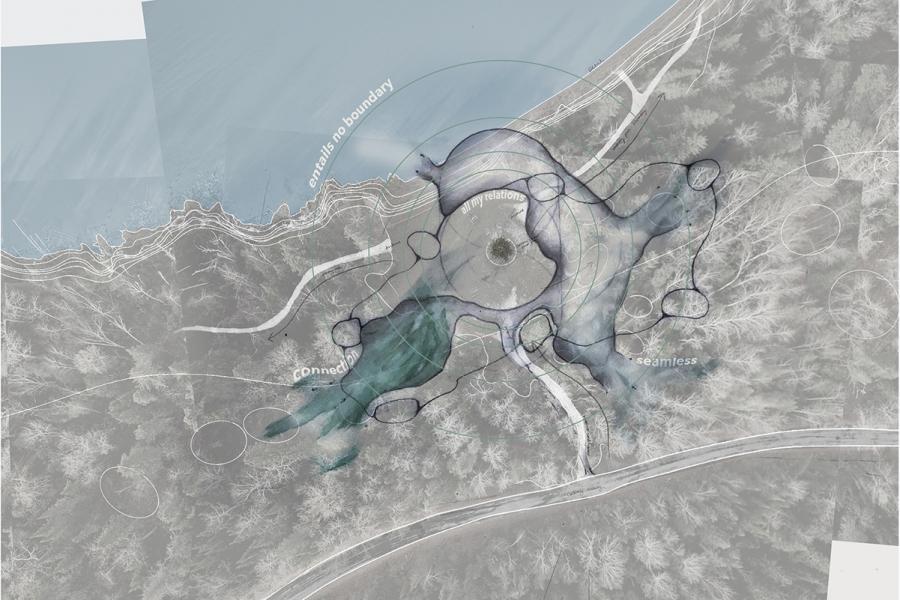
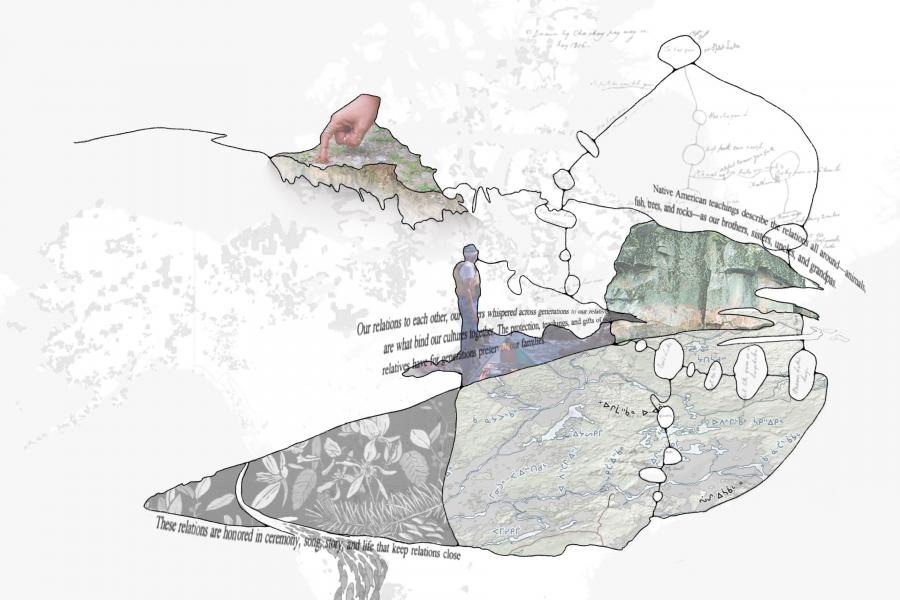
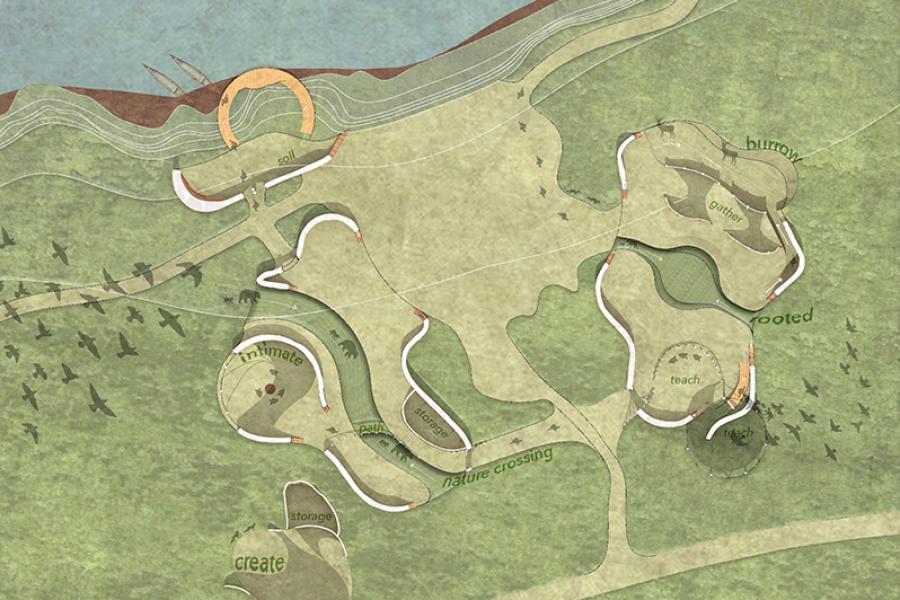
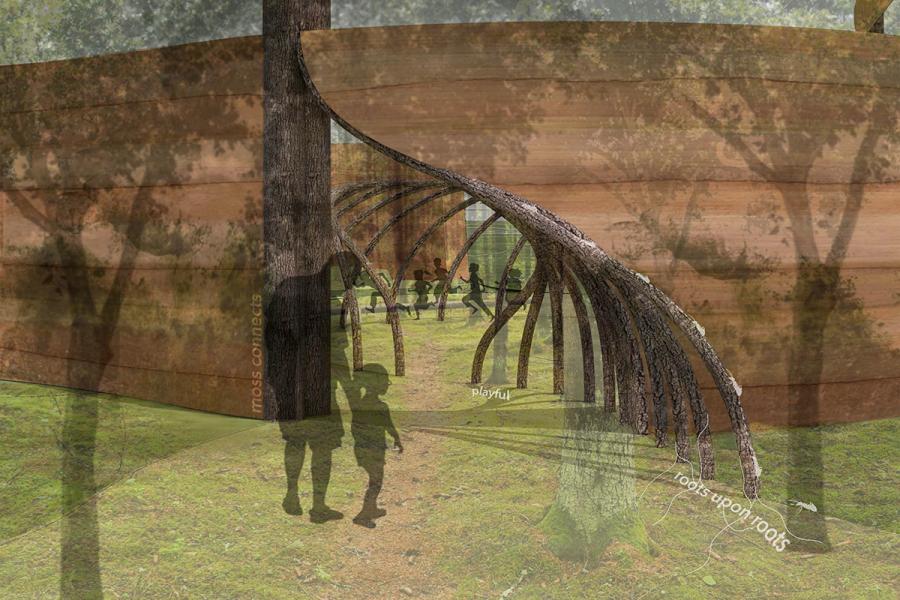
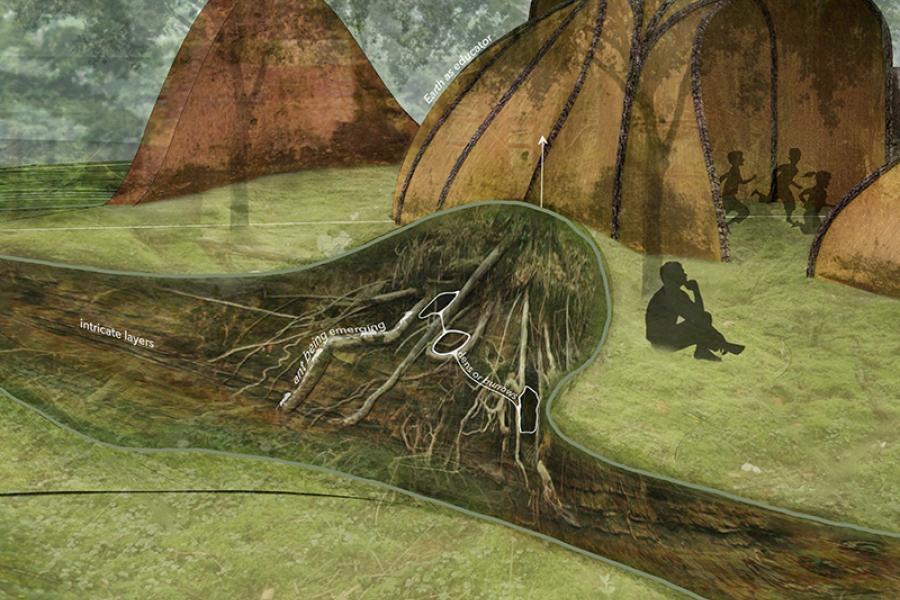
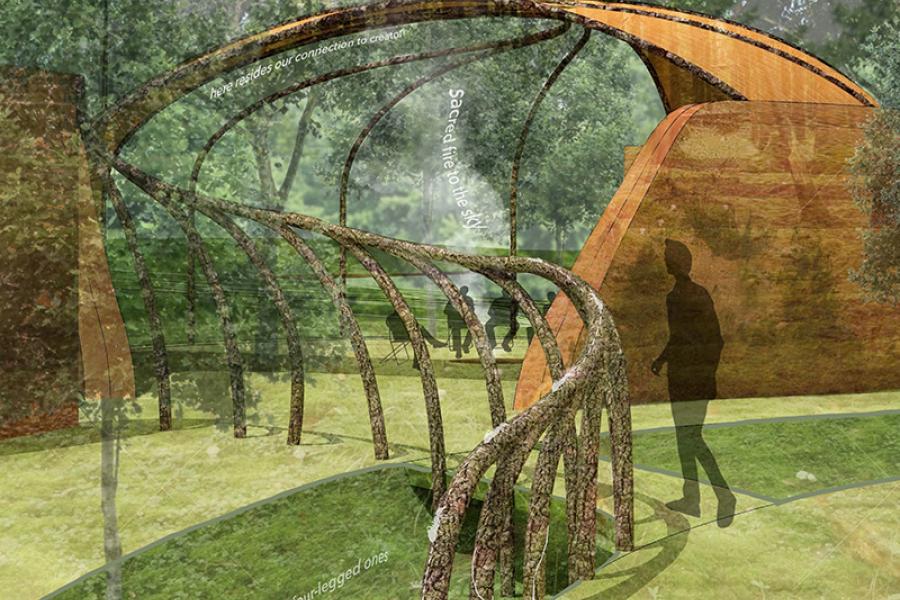
Wâhkôhtowin: Architecture for Our Kin
Sustainability, although attempts to address environmental impacts, still attributes to an egocentric view, only for the benefit of humans. Connected to the western and colonial concept that we are designing to sustain ourselves. Robin Wall Kimmerer eloquently speaks to the effect of colonialism: “In the settler mind, land was property, real estate, capital, or natural resources. But to our people, it was everything: identity, the connection to our ancestors, the home of our nonhuman kinfolk, our pharmacy, our library, the source of all that sustains us. Our lands were where our responsibility to the world was enacted, sacred ground.“1 This design thesis will explore how architecture can reconstruct a contemporary approach to sustainability by reestablishing a relationship with nature, one that considers all of creation.
Through history, architecture has been strongly influenced by colonial worldviews. Worldviews which have contributed to the loss of Indigenous knowledge, destruction, and violation of land. Indigenous ways of knowing work reciprocally with the more than human world, where human-centric approaches such as industrialization has caused destruction of entire habitats, ecosystems, and living beings. Attributing to our diminishing connection to the land.
Today, Indigenous peoples are attempting to regain our values and writing a new story. The act of regaining knowledge attributes to the understanding of wâhkôhtowin, a teaching that translates to “everything is related” and refers to kinship. Our understanding of our relationship with our kin allows us to re-establish and define our collective responsibilities with the Earth. This way of thinking creates a new story, shifting how we interact with the world. How do we start to redesign how we approach sustainability in architecture? Using design to enact our responsibility in incorporating and working with the environment that surrounds us and all who reside. How can we use the teaching of wâhkôhtowin to create a paradigm shift in how we think about the built environment?
1 Kimmerer, Robin W. Braiding Sweetgrass: Indigenous Wisdom, Scientific Knowledge and the Teachings of Plants. Milkweed Editions, 2013. 17.
